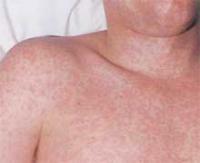Prevent yourself from viral illnesses it is not an easy task, as there are several viruses, which can be transmitted in different ways. However, some relatively common illnesses can be prevented with very simple measures.
Many of the illnesses caused by viruses are transmitted through contact with secretions or droplets of saliva. Others are transmitted by vectors or even contaminated food. Some general recommendations can be adopted for the prevention of illnesses caused by viruses.
Tips to Avoid Viral Diseases
Always wash your hands, especially before eating and after going to the bathroom.
Do not share glasses and cutlery.
Always wash food, paying special attention to those that will be consumed in nature.
Eating only in places that comply with the Sanitary Surveillance standards.
Use condoms with all sexual intercourse to prevent infections transmitted through sexual intercourse, such as HIV infection.
Use repellents in areas with large numbers of mosquitoes, paying special attention to regions that have mosquitoes Aedes aegypti.
Get vaccinated following the guidelines of the vaccination schedules. A wide variety of diseases can be prevented with the vaccine, such as the flu, rabies, measles and chickenpox.
Avoid agglomerations of people in times of outbreaks of certain diseases. In flu outbreaks, for example, you should avoid closed places and places with many people.
Avoid contact with sick people.
Eating well and exercising, as these habits are related to strengthening the immune system.
Do not stop now... There's more after the advertising ;)
Read too: Vaccines that all children should take

The vaccine is one of the main ways to prevent various viral diseases.
→ Virus Diseases
Viral diseases, also known as viruses, are caused by viruses, as the name implies. Several of them are very common, as is the case of colds and flu. Others, however, are rarer. Here are some well-known viral diseases:
The flu: It is caused by the influenza virus and presents as symptoms fever, body aches, runny or congested nose, sore throat and tiredness.

Flu is a virus-borne illness that can cause fever and body aches.
Cold: It is a disease different from the flu, as it is caused by other viruses, mainly the rhinovirus. In the cold, we have as the most common symptoms the presence of runny nose, sneezing, coughing, sore throat and tiredness.
AIDS: is a disease caused by HIV (human immunodeficiency virus), which attacks the individual's immune system, making them more susceptible to disease. Being HIV positive is different from having AIDS, as the term AIDS is used to describe the syndrome related to the failure of the immune system.
Dengue: is a viral disease caused by arboviruses, transmitted in the Americas by mosquitoes Aedes aegypti. In classic dengue, the main symptoms are headache, muscle pain, pain behind the eyes, joint pain, fever, fatigue, vomiting and skin blemishes.
Yellow fever: is a disease caused by a virus of the genus Flavivirus, which is vector-borne: mosquitoes of the genus Haemagogus, Sabethes and Aedes. This disease has a wild and an urban cycle, which are differentiated by their vectors, vertebrate hosts and place of occurrence. The main symptoms of Yellow Fever are headaches, jaundice (yellowing of the skin and mucous membranes), muscle pain, nausea, vomiting, fever and fatigue.
Anger: it is a disease transmitted to man through, mainly, the bite of animals that are infected. It is noteworthy, however, that it can also be transmitted by scratching and licking animals. Its symptoms are initially unspecific, such as headaches, nausea, sore throat and irritability. As the disease progresses, delirium, muscle spasms, seizures, and difficulty in swallowing may be observed.
Chickenpox or chickenpox: it is transmitted through respiratory droplets in the air, contact with the skin of a sick person or with a contaminated surface, and even during pregnancy, childbirth or breastfeeding. Symptoms include fever, malaise, tiredness, lack of appetite, and red patches that cause itching and later blister.
Read too:Tips to prevent H1N1 flu
→ Symptoms of viral diseases
Illnesses caused by viruses usually trigger relatively similar symptoms. Fever, tiredness and lack of appetite, for example, they are symptoms that usually appear in several viral diseases. That's why a doctor can often suspect a virus even without a result of laboratory tests.
The most common viruses are those that affect the respiratory and digestive systems. In respiratory viruses, it is usually noted fever, cough, poor appetite, sore throat and nasal obstruction. On the other hand, in gastrointestinal viruses, they are usually observed nausea, vomiting, colic, diarrhea and abdominal pain. In both cases, it is common for the patient to complain of malaise.
→ Treatment of viral diseases
Several viral diseases do not have specific treatment, and usually only medications are used to alleviate the symptoms of the disease. In the vast majority of cases, the body is able to fight the virus alone. This requires a fully functioning immune system. That's why doctors often recommend rest, hydration, and healthy eating in most cases of viral illnesses.

Rest, hydration and adequate nutrition are generally the medical recommendations in cases of viral diseases.
Of viral diseases that do not have specific treatment, we can mention dengue, mumps, measles, chickenpox, colds, flu, yellow fever and Zika. To pass the pain and fever, in these cases, it is recommended analgesics and antipyretics, that work, as stated above, only to relieve symptoms and not to promote healing.
Read too: How can pregnant women prevent the Zika virus?
It is worth noting that a strengthened immune system is important not only for the treatment of viral diseases, but also for their prevention. Therefore, it is essential to adopt healthy lifestyle habits.
By Ma. Vanessa Sardinha dos Santos
Would you like to reference this text in a school or academic work? Look:
SANTOS, Vanessa Sardinha dos. "How to prevent yourself from viral diseases"; Brazil School. Available in: https://brasilescola.uol.com.br/saude-na-escola/como-se-prevenir-doencas-virais.htm. Accessed on June 27, 2021.
Diseases and pathologies

Rubella, Viral pathology, Infectious-contagious disease, Airway, Virus, Congenital disease, Abortion, Gestational risk, Red spots, Diagnosis, Vaccination, Triple viral.


